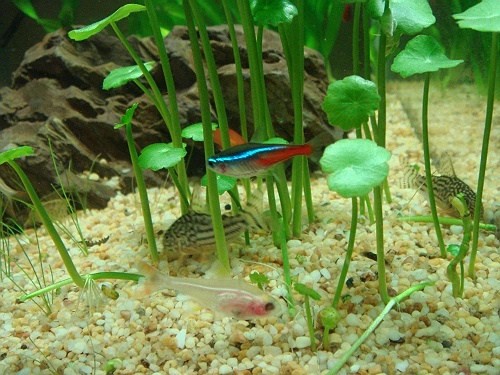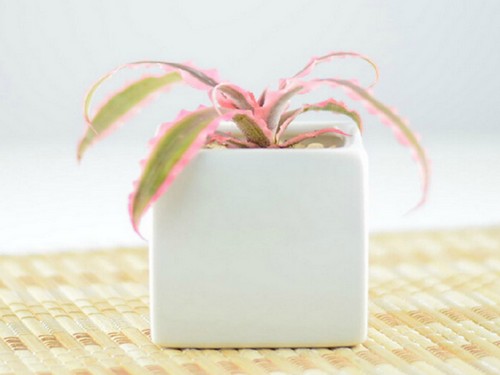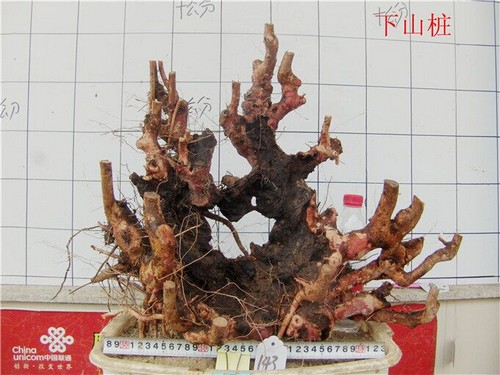How to plant the seeds of Rabdosia angustifolia
As a common potted ornamental flower, the flower friends named it "Qian Qian" to express their love, and their breeding methods have also attracted much attention, especially for the method of how to reproduce seeds. However, it is generally not recommended to use seeds to breed, because seeds are not easy to feed, and when they are bought in online stores, postage is higher than seed costs, and they are easy to be deceived. In addition, the grass cultivated by seeds is not easy to grow again, so it is better to use stem nodes to propagate, which is more convenient. However, we still have the following simple exposition on how money can be propagated with seeds.

Tongqian grass likes to be warm and humid, it is better to cultivate in half-day sunshine or shade, avoid direct sunlight, regardless of cultivation soil, it is better to cultivate soil with good soft drainage, or directly cultivated with water, the optimum water temperature is 22-28 degrees. Shade-resistant, moisture-resistant, slightly drought-resistant, strong adaptability. Tongqian grass is strong, easy to grow, propagates rapidly, and can be amphibious.
1. Get the seeds. Can be in a relatively high reputation of online stores, flower market to buy, or accept the sharing of flower friends. In short, the method of obtaining seeds is not the point.
2. Select a container. Anything'll do. Seeds need to be exposed to air. If ceramsite and pebbles are put too early in the process of hydroponics, the seeds will more or less fall under the pebbles, and it will be difficult to germinate. Therefore, it is generally recommended to find a bottle cap (beverage cap is fine), and then prepare some dried tap water, fresh-keeping film and small tendons to OK everything. If you want water, it is best not to use flowerpots, use closed containers.
3. If you buy it in online stores and flower markets, remove the seed packaging, you will find that the seeds are wrapped in green powder, do not break it blindly, it is really not the envelope of the seed. Pour the seeds into the bottle cap, do not pour them all at once, to prevent failure, and leave a backup for the next time. Pour a small amount of water to dissolve the green shell, and then cover it with cling film.
4. Put the finished bottle cap in the dark and wait for 2 or 4 days to see that some seeds have broken shells, and some can still see white roots. Remove the cling film every night to allow the seeds to breathe to prevent rotting roots.
5. Wait until the white root is 4mm to 6mm, but it is best to bask in the sun at 8: 9pm to avoid sunburn. It is not easy to grow leaves without sun exposure.
6. when the seeds germinate and are about to be shelled, you can put the ceramsite or pebbles into the cup, put the buds into the cup, gently fix the roots with ceramsite or stones, add water, and it is best to pour water along the edge of the cup, otherwise the fixed seedlings will be washed out, and the water will just touch the root.
7. bask in the sun every day, do not blow to the strong wind, add water at the right time, and add some hydroponic nutrients if necessary, and the seedlings will thrive.
Tongqian grass does not need a large basin, can also be planted in a larger bowl, daffodil pots can also be used to raise daffodils, soil with general vegetable garden soil, an appropriate amount of mixed with some river sand, which add a small amount of organic fertilizer as base fertilizer. Money can be planted flat when the money is planted, it is better to cover the rhizome slightly and not to be too deep. Then leave it in the semi-shade for a week and wait for the new leaves to grow and see the sun again.
Time: 2019-06-12 Click:
- Prev

The Propagation method of Ji Pineapple
Ji pineapple, native to tropical South America, is mainly distributed in the primeval forests of Brazil. Most of them grow on the big branches of the tropical rain forest and in the cracks in the bark, and potted plants are planted in the south of China. At present, what we see on the market are horticultural species. Ji pineapple has a high tolerance to the environment, and the bright light brightens the leaves.
- Next

Cultivation of bonsai tree stump of Photinia chinensis
Red Nan plant is shorter, branches are dense and flexible, leaves are small, thick green and shiny, the four seasons are green, pink velvet globular flowers are in full bloom in early summer, set off melon seed-like green leaves, the tree is extremely beautiful. The old pile in the mountain field, after cultivation and processing, can make Hengke flat and hierarchical, such as the shape of clouds, elegant and simple.
Related
- Fuxing push coffee new agricultural production and marketing class: lack of small-scale processing plants
- Jujube rice field leisure farm deep ploughing Yilan for five years to create a space for organic food and play
- Nongyu Farm-A trial of organic papaya for brave women with advanced technology
- Four points for attention in the prevention and control of diseases and insect pests of edible fungi
- How to add nutrient solution to Edible Fungi
- Is there any good way to control edible fungus mites?
- Open Inoculation Technology of Edible Fungi
- Is there any clever way to use fertilizer for edible fungus in winter?
- What agents are used to kill the pathogens of edible fungi in the mushroom shed?
- Rapid drying of Edible Fungi

